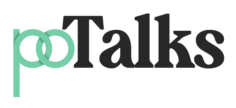Technology adoption patterns suggest that 2025 will mark a turning point for several scaling approaches that have been developing for years. These solutions address the fundamental throughput limitations that have historically constrained blockchain applications to niches where performance requirements are modest. The technical foundations for this shift include innovations in consensus mechanisms, data structures, and network protocols. Graph-based architectures enable concurrent transaction validation rather than forcing sequential processing, potentially increasing throughput by orders of magnitude compared to traditional designs. For example, payment networks, gaming platforms, and Internet of Things applications will benefit from this capability. The ability to process thousands or tens of thousands of transactions per second opens distributed ledger technology read the full post to use cases previously served only by centralized databases.
Integration with artificial intelligence systems
Integrating AI tools with blockdag architecture has opened up new approaches to data coordination and trustless transactions. Several promising applications showcase this convergence:
- Supply chain optimization with real-time tracking and predictive analytics
- Financial fraud detection systems combining historical patterns with transaction verification
- Content authentication frameworks that validate digital assets while detecting manipulated media
- Smart city infrastructure coordinating autonomous systems through secure shared ledgers
- Healthcare data management balancing privacy protections with research accessibility
These integrated systems leverage both technologies’ strengths while mitigating their respective limitations. The transparency and immutability of distributed ledgers complement modern AI systems’ pattern recognition and adaptive capabilities, creating robust applications that neither technology could enable independently.
Regulatory frameworks and compliance solutions
Several jurisdictions will implement comprehensive frameworks for distributed ledger technologies based on different technological approaches. This regulatory maturation provides greater certainty for enterprise adoption while establishing precise compliance requirements. Notable regulatory developments include:
- Specialized classification systems distinguishing between different architectural models
- Graduated regulatory requirements based on transaction volume and system purpose
- Technical standards for security auditing and vulnerability assessment
- Cross-border coordination mechanisms for monitoring international transactions
- Privacy-preserving compliance verification for sensitive applications
These frameworks reflect growing regulatory sophistication regarding the technical distinctions between different distributed ledger implementations. Rather than applying blanket regulations to all systems regardless of architecture, regulators increasingly tailor their approaches to address different models’ specific risks and capabilities.
Developer tools and infrastructure maturation
- Key infrastructure improvements include standardized APIs that abstract away architectural complexity, allowing developers to focus on application logic rather than low-level details. Integration frameworks simplify connection with existing systems, reducing migration costs and implementation timeframes.
- Testing environments that accurately simulate network conditions enable developers to validate performance and security characteristics before deployment. This capability proves particularly valuable for applications with stringent reliability requirements or those operating in regulated industries.
- Educational resources have similarly evolved, with specialized training programs addressing the unique development aspects for directed acyclic graph architectures. These programs bridge the knowledge gap that previously limited the talent pool available for implementing these systems.
Combining improved tooling, simplified integration pathways, and expanded educational resources creates a foundation for broader adoption across diverse industry sectors. As implementation barriers decrease, organizations previously limited by technical constraints explore applications previously beyond their capabilities.

